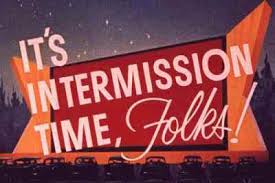Theaters are getting more creative this summer in an effort to bring the masses back to the movie house.
Re-releasing classic films, sponsoring minifilm festivals, and selling exclusive merchandise are all ways of making the theater a destination for movie fans.
I love these ideas. I want movie theaters to survive and thrive, and anything they can do to become more profitable increases their chances of remaining open.
But I think filmmakers could do their part, too, with one simple change:
Add an intermission to their films.
My family and I were looking forward to the release of “Dune: Part 2” earlier in the spring, but when my son saw the running time – 2 hours and 46 minutes – he said, “Maybe we should just wait until we can watch it at home.”
He wasn’t wrong.
Add in 14-16 minutes of trailers before the movie even begins, and its real running time is over three hours, which will almost certainly require a trip to the restroom halfway through the movie.
Maybe two if you spent the first hour of the movie drinking a soda.
This means missing at least five minutes of the movie, frantically running to the restroom, and possibly missing a vital part.
A moment you wouldn’t ever want to miss.
This is why I waited to see Oppenheimer at home. Christopher Nolan’s instant classic has an official run time of three hours, with more than 17 minutes of trailers preceding the film. Unless I’m asleep, it’s impossible for me to go three hours without needing to pee.
I didn’t want to risk missing a moment of that movie to run to the restroom.
While watching “Star Wars: The Force Awakens” years ago, my wife, Elysha, needed to use the restroom. She turned to me and said, “Is this a good time?”
I can usually tell. My storytelling brain can usually determine the right moment to leave.
“Yes,” I said. “Go now.”
But as she rose from her seat, I grabbed her hand and pulled her back into it. “No,” I whispered. “Don’t go. Something big is about to happen.”
At that moment, Han Solo and Chewbacca had split up. Chewbacca went one way, and Han Solo went the other.
My thought:
Han and Chewy would never separate without a good reason. This is a critical moment in the movie.
I wasn’t wrong. Less than two minutes later, Han Solo was killed by his son, Kylo Ren.
Had it not been for me, Elysha would’ve missed the death of one of cinema’s greatest heroes.
Can you imagine? She returns from the restroom and wonders, “Where the hell is Han Solo?”
But this happens all the time. People leave movies to use the restroom and miss vital, beautiful, transcendent moments.
The solution is simple:
Add an intermission. Not only would patrons be able to use the restroom, but the theater could then sell additional concessions, where they make the bulk of their profit.
This is not a new idea. For a long time, films had intermissions when projectionists needed to change reels. But even after reels were no longer needed, theaters continued to provide intermissions to give audiences a break for years. Eventually, they were phased out to pack more screenings into each day.
The last official movie to have an intermission was Gandhi in 1982.
However, with fewer films being produced today and many theaters having two dozen or more screens, the need to maximize screenings has been mitigated, allowing for the return of the intermission.
Also, most Broadway shows have an intermission, allowing theatergoers to use the restrooms and purchase concessions, and no one seems to mind. My family and I attend many Broadway shows each year, and the first thing we do is look to see if there is an intermission.
When there isn’t one, we’re annoyed.
Happily, most do.
Why not movies, too?
And yes, as a storyteller, I understand that an intermission allows audiences to pause their suspension of disbelief and return to reality, thus disturbing the immersive magic of stories. And yes, we try to avoid disruptions like these at all costs when telling stories—on the page, the stage, or the screen—but we also want as many people as possible to see and hear our stories in the most ideal and profitable circumstance possible.
For filmmakers, that circumstance is almost always a movie theater. So make it a more pleasant, inviting experience.
Also, here’s another way to force audiences to pause their suspension of disbelief:
Require them to sprint down a long, carpeted hallway to a public restroom to pee while the film continues to roll in the theater.
Or squirm in their seat, thinking more about their bladder than the story.
If people are already leaving the theater to pee, why not at least choose the most logical time in the movie for that interruption and allow theaters to make a few extra bucks during that time?
This is a no-brainer, Hollywood. Make it happen.








